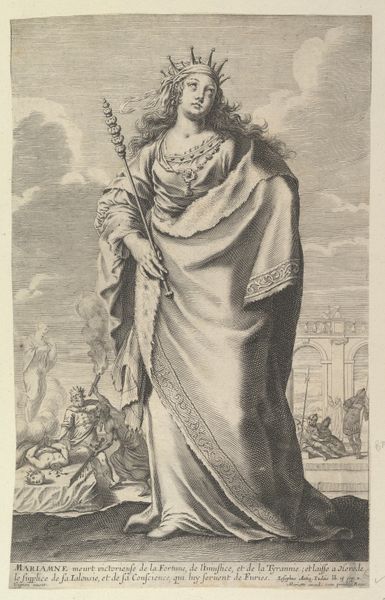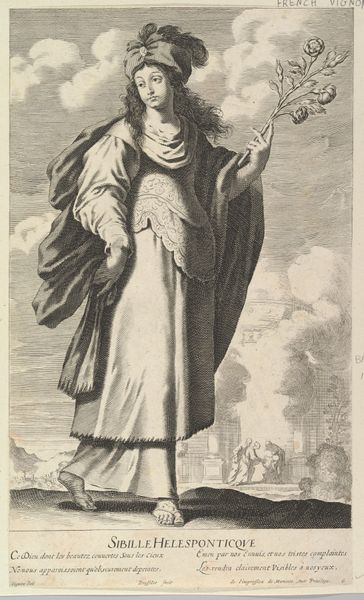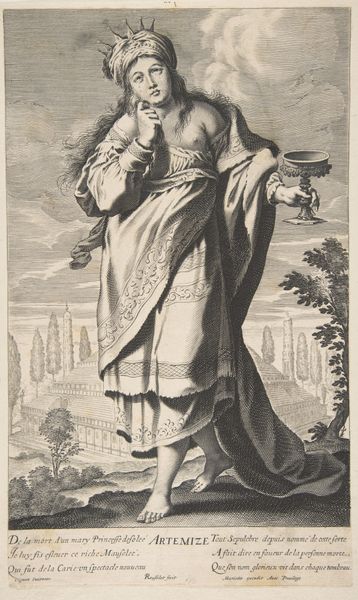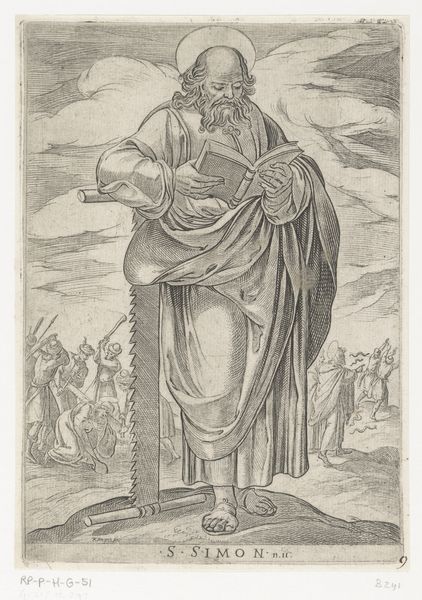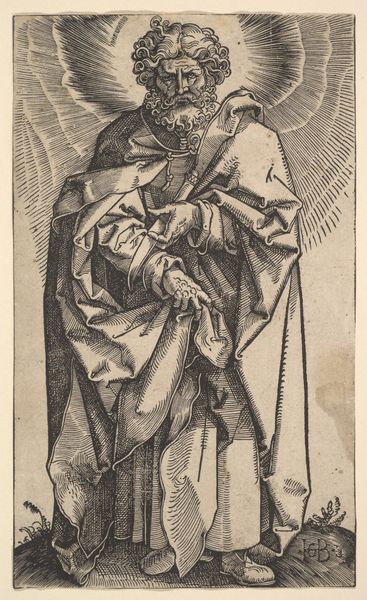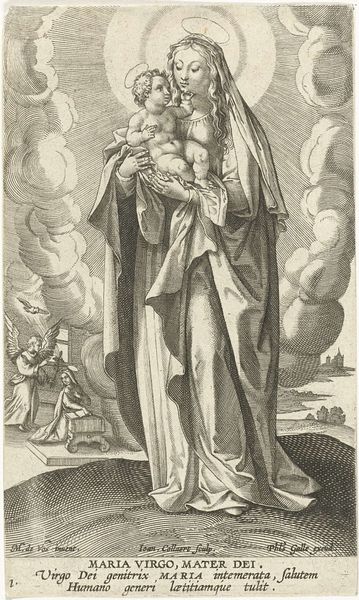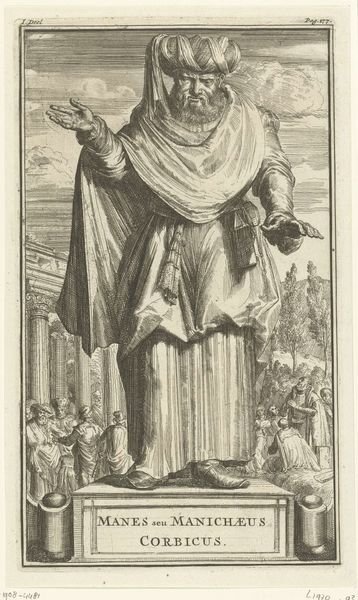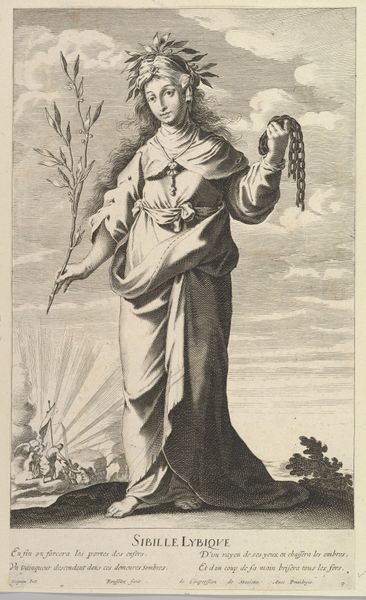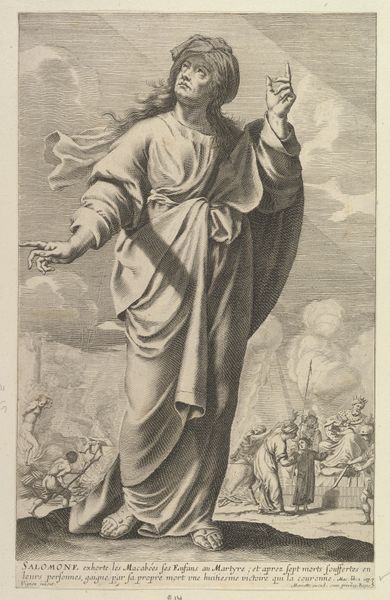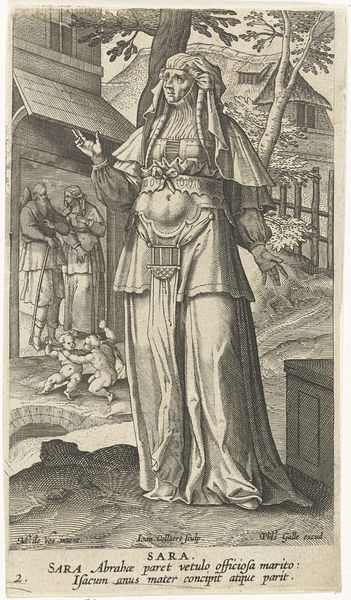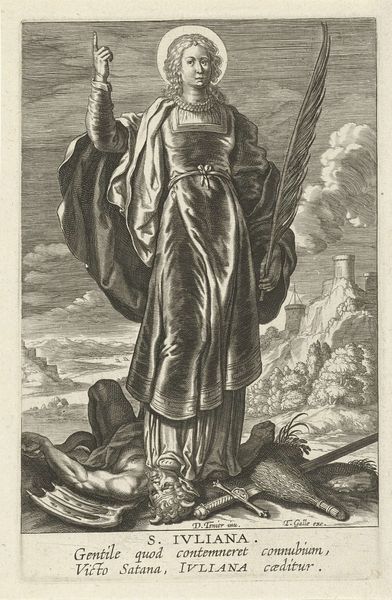
print, engraving
#
allegory
#
baroque
# print
#
figuration
#
form
#
line
#
portrait drawing
#
history-painting
#
engraving
Dimensions: 257 mm (height) x 140 mm (width) (bladmaal)
Editor: Here we have "Virgin Mary with Crown and Scepter," an engraving by Monogrammist s.W., dating sometime between 1609 and 1672. The image feels so formal, almost like a propaganda poster, but with all this delicate engraving! What's your read on this piece? Curator: Propaganda, perhaps, but isn't all art a little bit of persuasion in disguise? This engraving— with its dramatic chiaroscuro achieved through those masterful lines – it's trying to persuade us, yes, of the Virgin Mary’s power, but also of her grace. Notice the details, like the softness of her gaze amidst the rigid scepter and crown. How do you think that juxtaposition functions? Editor: It’s interesting… she looks powerful, but also approachable? And that inscription at the bottom-- Sacer Protevs, something about sacred protection? Curator: Precisely. This was likely commissioned during a period of religious upheaval, perhaps as a reaffirmation of Catholic power and divine protection. And isn’t it curious that the artist chose the print medium? What effect does that have, do you think? Editor: Hmm… maybe to reach a wider audience? Like mass communication before the internet? Curator: Exactly! And consider how the line work lends itself to reproduction, creating copies of the divine message. Almost like early memes, wouldn’t you say? Editor: Haha, early memes, I love that! I hadn't really considered the practical aspects of printmaking in spreading these kinds of images and ideas. Curator: It really makes you think, doesn't it? The artist clearly wasn't just showing us the Virgin Mary, they were making a very calculated statement. It certainly reframes how I understand its creation, looking more closely at the "why" rather than just the "what."
Comments
No comments
Be the first to comment and join the conversation on the ultimate creative platform.


